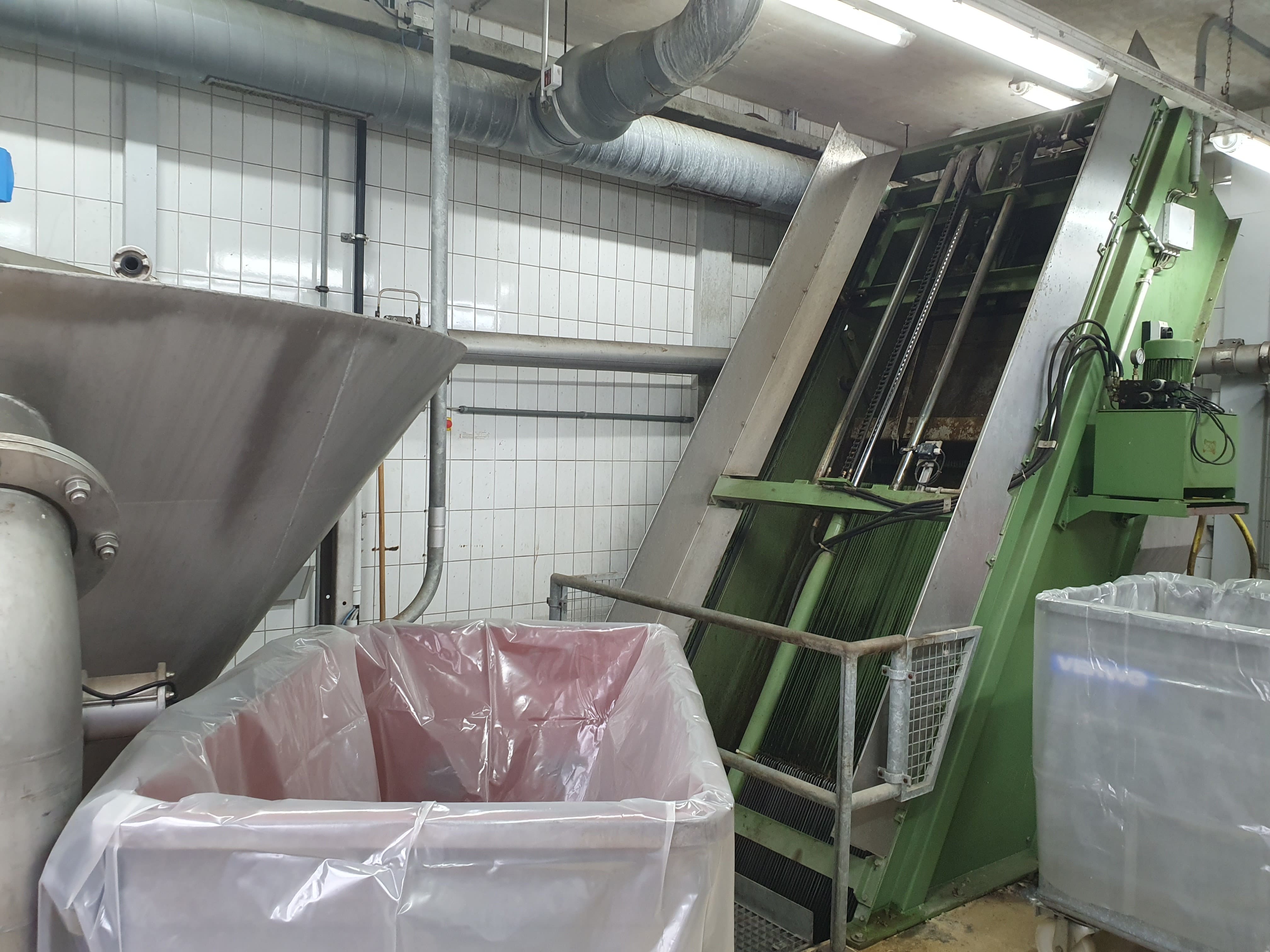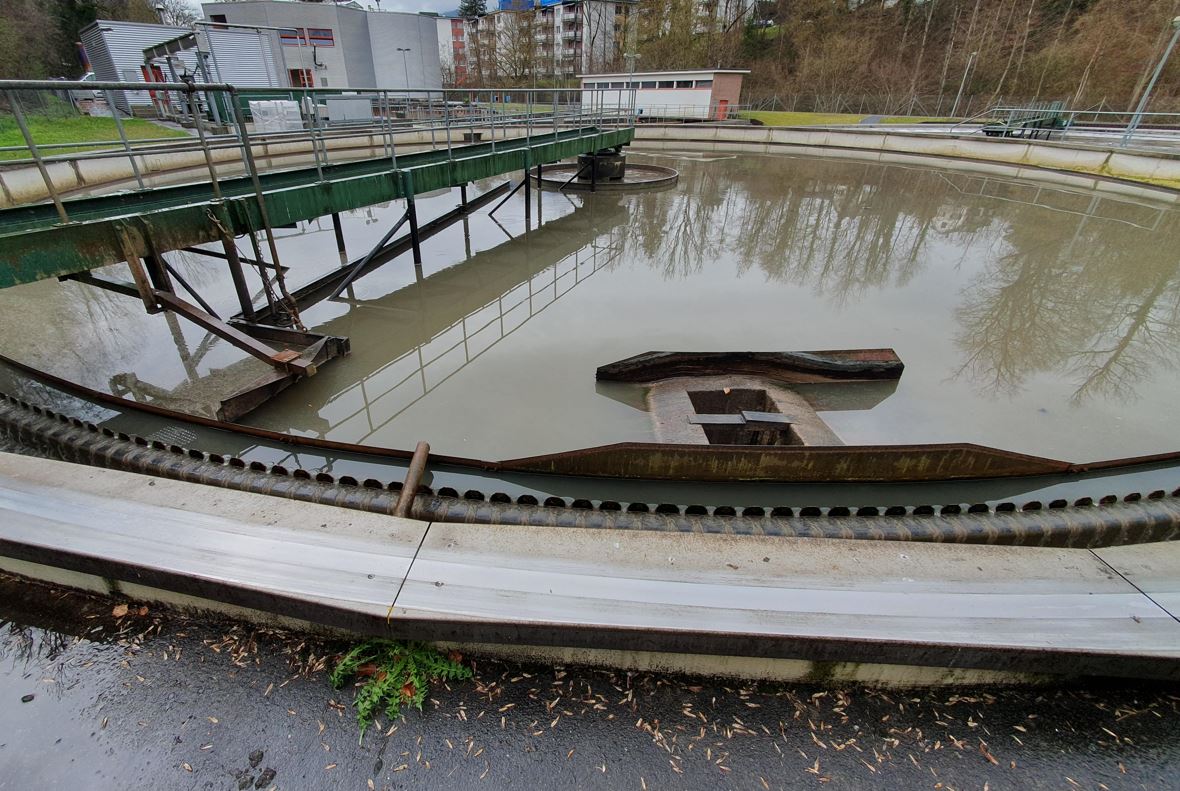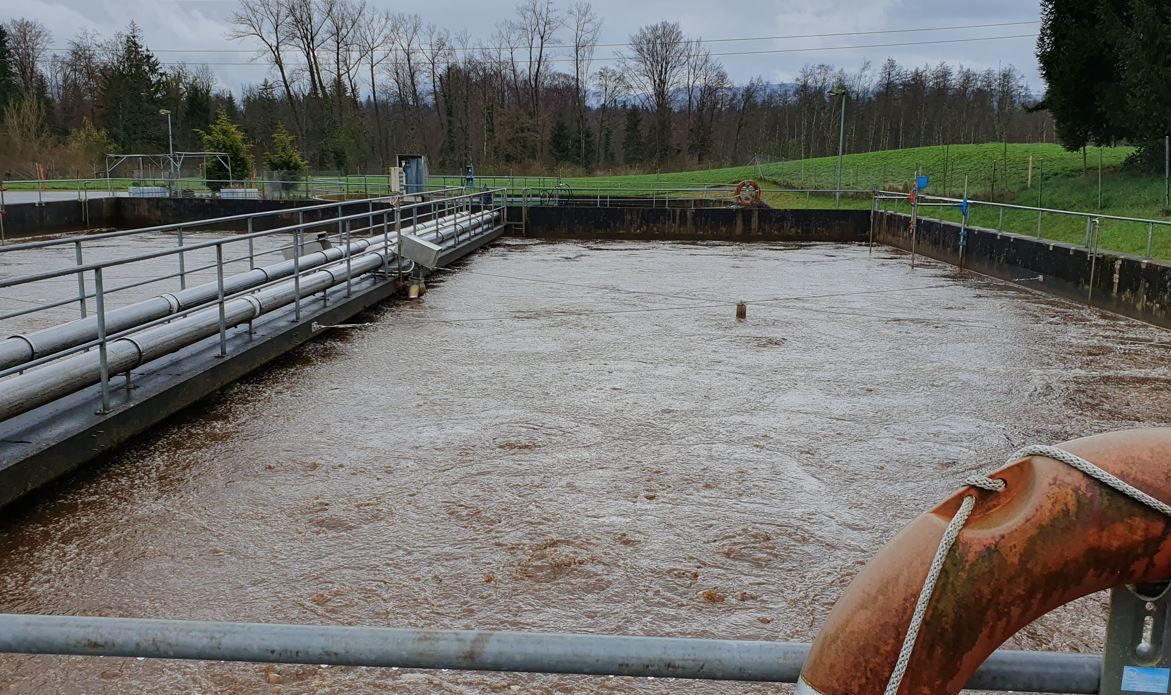On March 30, 2023, the day had finally arrived. I was able to visit the wastewater treatment plant in Rüti in the Zurich Oberland region. Thanks to my connection with my employer (Rüti municipality), it was relatively easy to arrange a visit. Prior to my visit, I had prepared some questions and sent them to the wastewater treatment plant team. When I arrived there, the operation of the wastewater treatment plant was explained to me first. I will try to summarize the important steps here.
1st Stage (Mechanical Treatment) The incoming wastewater is first passed through a screen, where coarse materials such as wood, leaves, paper, textiles, and other unwanted solid substances are separated, as they can clog pipes, damage pumps, and thus affect the operation of the wastewater treatment plant. The screened material is mechanically collected, dewatered, and disposed of through incineration. In the subsequent oil/sand separator, fats, oils, fine gravel, and sand are removed. The sand is washed and deposited, and fats and oils are usually also incinerated. The wastewater then flows at a reduced velocity through the preliminary settling tank, where sludge and solids settle to the bottom for about an hour. A traveling scraper pushes this material into the fresh sludge hopper, and floating substances into the floating sludge shaft.
2nd Stage (Biological Treatment)
The mechanically treated wastewater still contains many dissolved organic carbon compounds and nutrients that can cause putrefaction and sludge formation in water bodies, leading to hygienic concerns. These substances are converted into carbon dioxide and water through biochemical degradation by bacteria and other lower organisms (microorganisms) that find suitable growth conditions in the aeration tank. Additionally, biomass, called activated sludge, is generated, which settles in the final settling tank and can thus be separated from the treated wastewater. Aeration is provided by adding compressed air to the aeration tank, which supplies the oxygen required for the degradation processes.
In the aeration tank, the suspended microorganisms degrade the pollutants. Under normal operating conditions, they form activated sludge flocs with other non-dissolved wastewater constituents. This flocculent activated sludge is separated from the treated wastewater by sedimentation in the final settling tank. The majority of it is returned to the aeration tank, where it is needed again for the degradation of wastewater constituents. Excess sludge is transferred to the sludge treatment via the preliminary settling tank. Activated sludge can be partially killed by toxins or impaired in its cleaning performance and growth due to unsuitable wastewater composition. This can manifest in poorly settling, filamentous sludge flocs that may enter the water bodies via the wastewater discharge from the wastewater treatment plant.
3rd Stage (Chemical Treatment) Phosphate enters the water bodies through the treated wastewater and stormwater overflows. To prevent undesirable nutrient enrichment and consequent algae growth, most wastewater treatment plants operate a phosphate precipitation process called chemical treatment stage. In this process, the dissolved phosphates are converted into settleable flocculent form by dosing iron or aluminum salts. This is usually done in parallel with the biological treatment in the aeration tank (simultaneous precipitation). The metal-phosphate flocs that settle in the final settling tank are removed from the treated wastewater together with the activated sludge.
With appropriate operation and use of additional anaerobic tank parts, phosphates can also be removed from the wastewater by microorganisms (biological phosphorus removal). However, this process is only used in a few cases in the Canton of Zurich due to its complexity and higher costs.

The wastewater process is more than complex. To make it simpler and more understandable (besides my interview) I used this page as a help: www.buelach.ch/Klaeranlage
Since everything is only in German and my English skills are not good enough, I asked ChatGPT for help. This is also not my final text for publication, but only an intermediate step.
(This post is related to befter step 3)